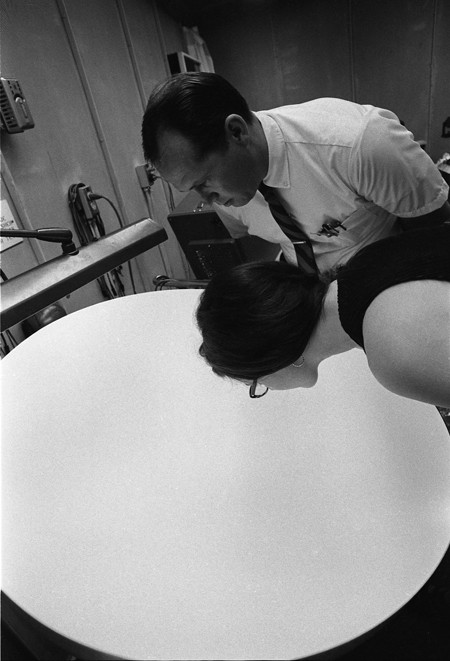Beginning with a close examination of this unique collaboration and its impact on Irwin’s and Turrell’s subsequent practices, my dissertation regards the nexus of abstract sculpture, experimental architecture, and radical interior and graphic design as it intersected with the aerospace industry during the late 1960s and early 1970s. Understood more broadly, my study focuses on the confluence of art, technology, and politics during the Cold War and draws parallels between the aesthetic space of the work of art (for example, the “interior” space of postwar abstract sculpture and painting) and its various institutional settings (the artist’s studio, the art school, and the museum). Ultimately it investigates how such artistic and institutional practices are related to questions of ideology in the post – World War II period.
Motivating my study is a word central to Wortz’s research, habitability — a technical term used during the earliest years of the Cold War to describe the physiological and psychological limits of the upper atmosphere and outer space, and, in turn, the technologies devised to sustain life within them. My work expands this term in order to rethink the stakes of a revised account of minimalist (or “minimal”-looking) body of work by a group of artists who explicitly engaged, through their work with Wortz, the concept of habitability at the dawn of the 1970s. Focusing on the wider aesthetic importance of defining, experiencing, and “administering” space, my study contributes to a deeper understanding of a discourse that shaped a cultural preoccupation with a host of spaces during the 1960s and 1970s (outer space, urban space, gendered space), while addressing a set of concerns and desires about the affective and intersubjective implications of dwelling within such domains. We might
The first two chapters of my study focus respectively on the psychological (Turrell) and sociological (Irwin) importance of habitability as a means for conceiving and constructing abstracted physical environments that surround the viewer. While Turrell’s earliest light-based projection works and rooms of extreme darkness and undifferentiated light (built between 1967 and 1974) prompted thinking about how habitual vision structures our perception, Irwin’s increasingly social understanding of habitability—and his ongoing collaborations with Wortz throughout the 1970s—extended his architectural abstraction beyond the confines of the studio and the museum, into the built environment.
During my residency at CASVA, I have had the privilege to discuss this project with many of my colleagues, and in doing so, have refined this concept across two additional chapters and completed my dissertation. The third chapter considers how Larry Bell (b. 1939) used the concept of habitability to define his sculptural practice in terms of dwelling within abstracted domestic space. A final chapter examines the experimental graphic design and principled pedagogy of feminist designer Sheila Levrant de Bretteville (b. 1940) in relation to her feminist critique of Wortz’s conception of habitability. In addition to allowing me to further refine my study of abstraction and technology of the twentieth century, my time at CASVA has helped me to cultivate a deeper historical appreciation for the political economy of artistic production across a broader historical spectrum.
